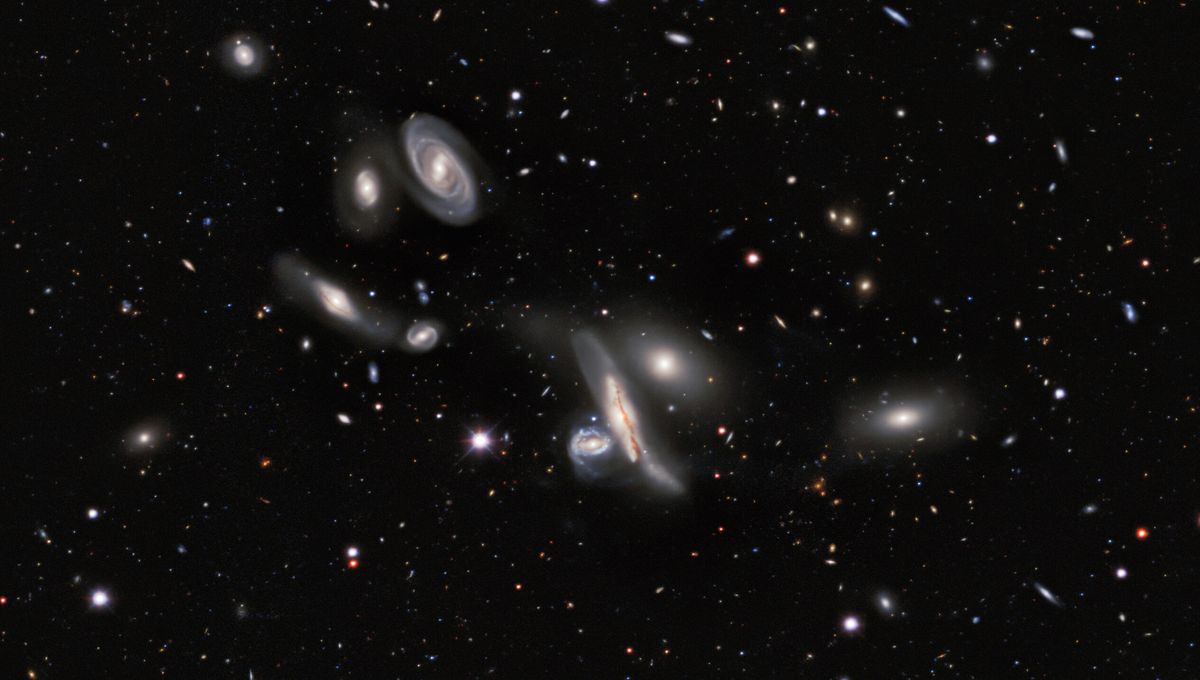
The universe is undergoing an accelerated expansion. We call the source of this expansion dark energy – a mysterious form of energy that permeates the whole universe pushing space-time apart. We do not know what dark energy is but its existence allows astronomers to explain so many features of the universe. A new hypothesis suggests quite a peculiar source of this energy: black holes.
The idea is that black holes are “cosmologically coupled” – this means that as the universe expands they get bigger. But it might also mean the opposite: as they grow bigger, the universe expands. Dark energy is just a substance, a form of energy, that is produced when you form a black hole. When a black hole is gobbling up a star or some interstellar plasma, it produces more dark energy. The idea is not new, it actually came from black hole physics in the 1960s, long before we had any inkling that the universe was undergoing an accelerated expansion.
This is definitely like frontier stuff. We don’t know everything about what’s going on here. We basically only know the sketch of it.
Dr Kevin Croker
The team used data from the Dark Energy Spectroscopic Instrument, which allows us to estimate the size of the universe at different points in time. The researchers combined this data with the known star formation rate in the cosmos at that time and then compared the two.
“We just input that information on star formation to this scenario and we ask: ok, how big is the universe by this scenario? If the black hole production is actually dark energy production and that black hole production is tracked by the star formation rate, then how quickly is the universe growing?” Dr Kevin Croker, from Arizona State University, told IFLScience.
What they found is a nice agreement between the growth of black holes and the expansion of the universe. The death of massive stars creates black holes and the amount of dark energy increases in the universe. This might be just an intriguing correlation, but it has some consequences that make it attractive to the members of the team.
The solution of black holes as dark energy blobs solves a problem in the study of black holes as they do not need to have a singularity at their center. That’s a major challenge to general relativity. It also solves where dark energy comes from, although the team do not know how the conversion of regular (called baryonic) matter inside black holes actually creates dark energy.
Last but not least, it solves the Hubble tension – an issue in astronomy where different methods produce different estimates of the expansion rate of the universe. Measurements of galaxies say one thing and measurements from the cosmic microwave background (CMB) – the echo of the Big Bang – say another.
Using the galaxy distance method, the expansion rate is 72.8 kilometers per second per megaparsec. This unit of measurement might seem a bit weird at first. It means that if two galaxies are 1 megaparsec (3.26 million light-years) apart, the universe expansion makes them look like they are moving away from each other at a speed of 72.8 kilometers (45.2 miles) per second.
The value from the CMB, on the other hand, is 67.4 kilometers (41.9 miles) per second per megaparsec. The uncertainties on each value are small and they don’t overlap, but if dark energy comes from black holes, then the measurement extracted from the CMB needs tweaking.
“If you’re converting baryonic material into dark energy by the production of black holes (because black holes are this dark energy blob thing) then the expansion rate you expect from the Big Bang is not 67.4 [kilometers per second per megaparsec] but it’s basically 70. That brings you a lot closer to that late time measurement,” Dr Croker told IFLScience.
Croker started this work with Joel Weiner, a mathematician formerly at the University of Hawaii. He’s upfront about challenges to this idea as well as possible solutions. While the cosmologically coupled black holes hypothesis has observational backing, when it comes to the whole universe, it can’t easily explain black holes observed in gravitational wave research and in globular clusters.
The dark energy black holes would solve major issues in cosmology but they might not explain all the astrophysical observations of black holes. How would these dark energy black holes work? That is the question. But it is not just theoretical. The team is building a case to look for what these dark energy black holes might be doing in the universe.
“This is definitely like frontier stuff,” Dr Croker explained. “We don’t know everything about what’s going on here. We basically only know the sketch of it, but there’s enough of a sketch that it can be a quantitative sketch and we can go and we can search for these effects.”
A paper describing these results is published in the Journal of Cosmology and Astroparticle Physics.
Source Link: Black Holes Could Be Churning Out Dark Energy, Potentially Solving Cosmological Mystery